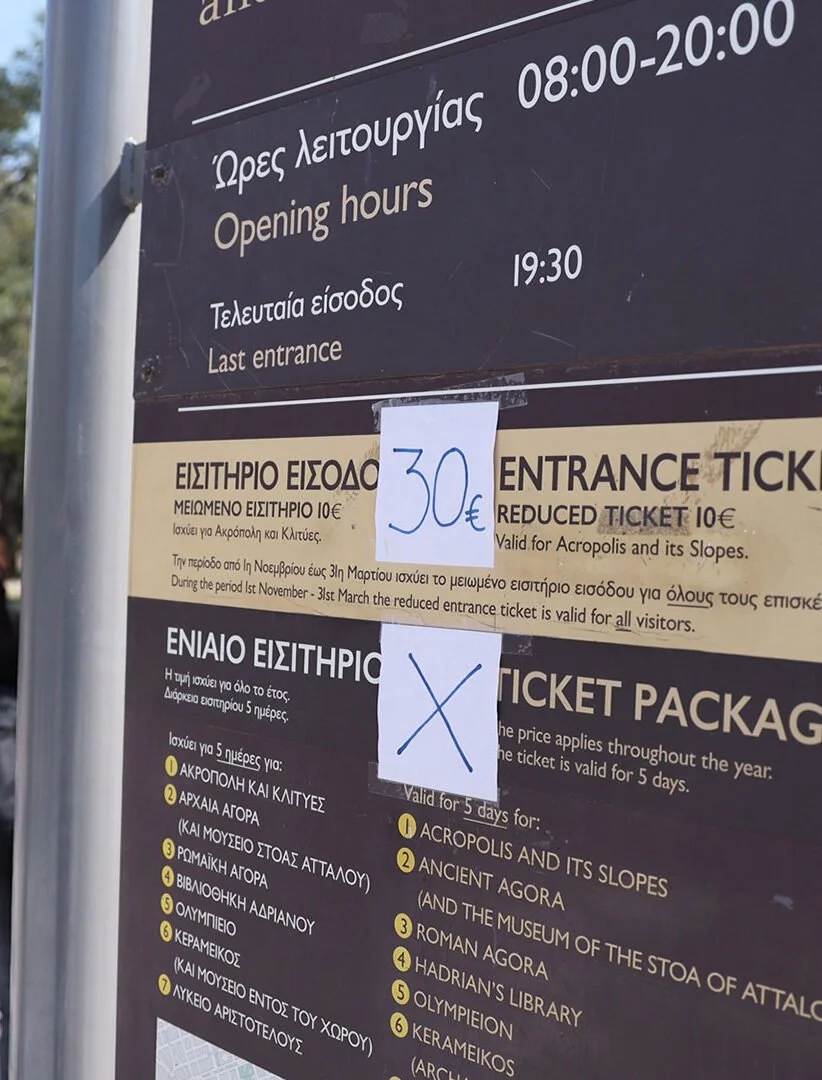A new ticket pricing policy has been rolled out across Greece's major archaeological sites and museums, with the most notable change being the increase in admission to the Acropolis, now priced at €30, up from the previous €20 during the peak season (April 1 to October 31). But is the new cost putting off visitors—or do they feel it’s worth it?
“It’s Worth Every Cent,” Say Tourists
Despite the price hike, most foreign visitors to the Acropolis appear undeterred. “We were aware the ticket price would go up, but honestly, I think it’s absolutely worth it for a monument of such global importance,” said a British tourist while waiting in line on Holy Monday morning, speaking to Greek broadcaster SKAI.
A Comprehensive Overhaul of the Pricing System
The changes extend far beyond the Acropolis. Starting in April 2024, entrance fees are gradually increasing across 350 archaeological sites, monuments, and museums in Greece. This is part of a broader effort to streamline and modernize the pricing structure.
Key changes include:
Abolition of combo tickets that previously allowed access to multiple sites with one pass (with some exceptions).
Two free admission days per month, up from one.
Free entry for non-EU children and youth up to 18 years old, extended from the previous age limit of 5.
New early morning and late evening time slots at the Acropolis to reduce overcrowding.
Exclusive Acropolis Experience Outside Operating Hours
A new premium offering—a Personalized Visit to the Acropolis—is now available outside regular hours (7:00–9:00 a.m. and 8:00–10:00 p.m.). These intimate group tours (up to 5 people, 4 groups per time slot) include a dedicated guide and commemorative gifts, at a significantly higher price point. The service is expected to expand to additional archaeological sites in the future.
Simplified Ticket Categories from 2025
Starting April 2025, a more rationalized five-tier pricing model will be implemented, based on each site's visitor numbers and cultural significance:
Sites with over 200,000 annual visitors: €20
75,000–200,000 visitors: €15
15,000–75,000 visitors: €10
Fewer than 15,000 visitors: €5
The Acropolis, in a category of its own, is set at €30 year-round.
Independent Pricing for Major Public Museums
Some state-run museums—including the Acropolis Museum, the National Archaeological Museum, and the Archaeological Museums of Thessaloniki, Heraklion, and others—will have the autonomy to set their own ticket prices. These institutions operate as public legal entities and are granted greater flexibility under the new system.
Ending Seasonal Pricing and Complex Discounts
Previously, Greece had a nine-tier ticket system, with prices ranging from €2 to €20, plus various categories for reduced or free entry. The new policy does away with the summer/winter pricing split, introducing uniform prices year-round per site category.
Other changes include:
A third free Sunday each month during winter (November 1 – March 31).
Maintaining reduced entry for EU citizens aged 65+ (October to May).
Free entry for all EU citizens under 25, and now extended to non-EU visitors up to age 18.
Continued free access for people with disabilities and other established social or professional categories.
Additionally, a “Culture Card” (Κάρτα Πολιτισμού) will soon be available to eligible citizens through gov.gr or local citizen service centers (KEP), simplifying access to free or discounted entry.
Accessibility vs. Sustainability
While the €30 ticket may raise eyebrows, many tourists argue the cost reflects the global value and cultural importance of monuments like the Acropolis. Yet, questions remain: will rising prices deter long-haul travelers or families on tighter budgets? Is cultural accessibility at risk?
For now, Greece seems to be betting on a model that balances heritage preservation, crowd management, and economic sustainability—while still offering flexible access options for a wide range of visitors. Time will tell how successful this ambitious new framework will be.










